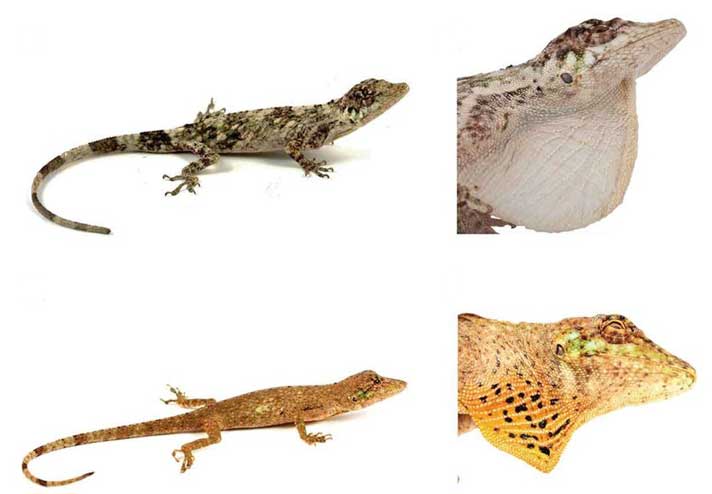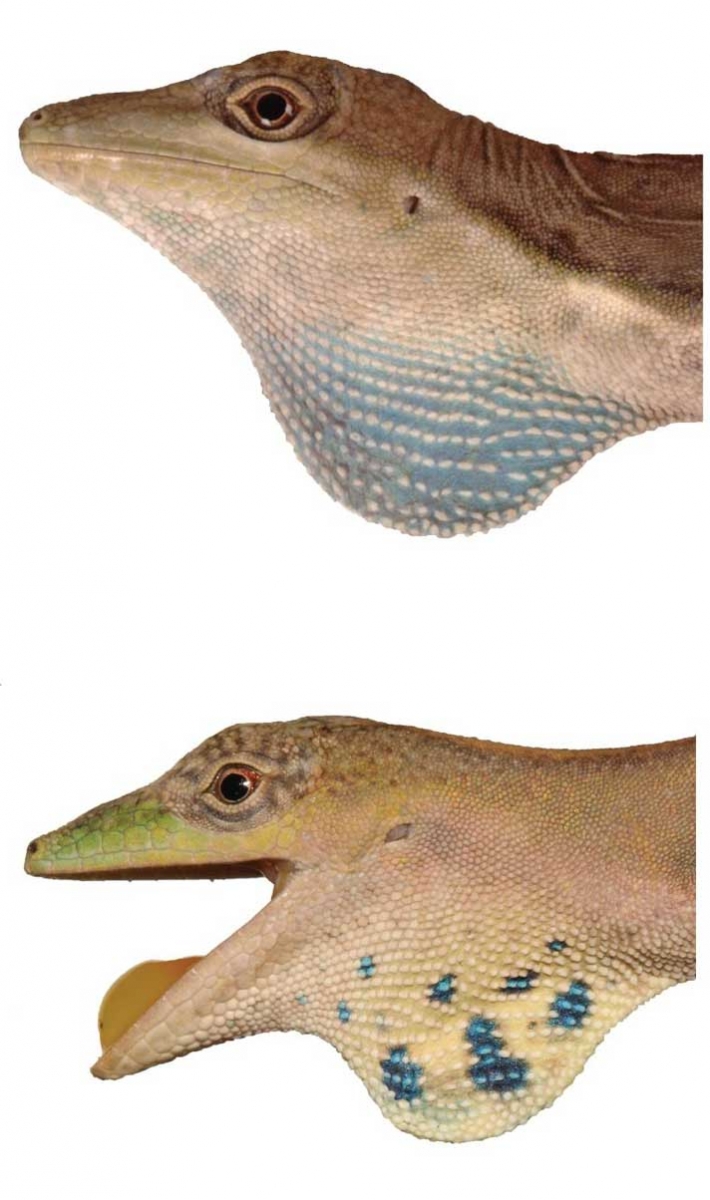Anolis hyacinthogularis ,has a blue dewlap, while Anolis lososi is named after famed anole researcher Jonathan Losos.
Researchers have discovered and described a pair of anole lizards from the Andes of southern Ecuador.
The lizards are distinguishable from other Anolis lizards by their external anatomy, mitochondrial divergence and dewlap color, the researchers wrote in a paper describing the new species.

Torres-Carvajal, Omar & Ayala, Fernando & Lobos, Simón & Poe, Steven & Narváez, Andrea. (2017).
Anolis lososi is named after well known anole expert Jonathan Losos.
The blue dewlap anole (Anolis hyacinthogularis) or blue-throat, is identified by its blue dewlap in the male and the blue spotted dewlap in the female. It is the sister anole to Anolis calimae, the researchers noted.
Want To Learn More?
Anolis lososi sp. nov. is a short limbed anole that the researchers say is commonly found on twigs high above (as high as 8 meters) the ground. This new species is named after Jonathan Losos, a well known expert on anole lizards. It is a sister species to Anolis williamsmittermeierorum.

Torres-Carvajal, Omar & Ayala, Fernando & Lobos, Simón & Poe, Steven & Narváez, Andrea. (2017).
The blue dewlap anole (Anolis hyacinthogularis) or blue-throat, is identified by its blue dewlap.
The two new species were collected in a protected area of Podocarpus National Park in southern Ecuador.
An abstract of the paper, "Two new Andean species of Anolis lizard (Iguanidae: Dactyloinae) from southern Ecuador" can be read at the Journal of Natural History website.


